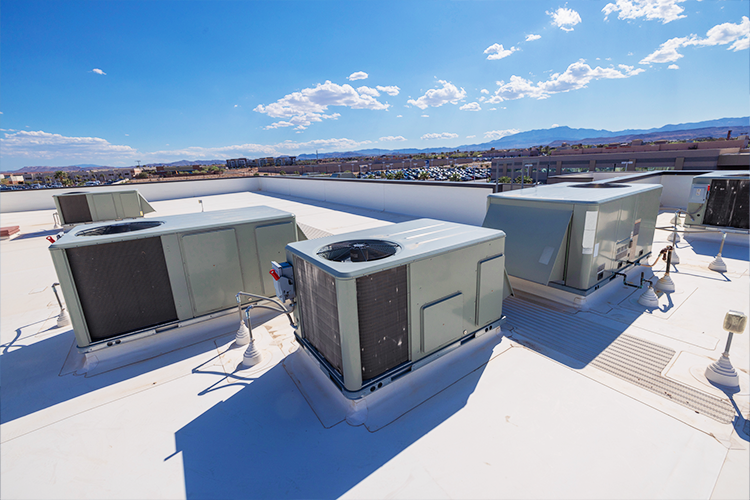Don’t Set It and Forget It: How to Protect Your LED Lighting Investment
September 14, 2016
Having performed thousands of lighting retrofits, we’re familiar with that strong desire to “set it and forget it” when it comes to LED lighting retrofits.
After all, you’ve just invested in new, highly efficient LED technology that’s expected to provide significant energy and bottom line savings for the next 10 years or more.
It’s under warranty.
The failing, ineffective old lighting system that made the repair guy a frequent visitor is in the recycling bin.
So why not “set it and forget it”?
The simple answer is you want to maximize and protect the investment you’ve made in your new LED lighting installation. Here are four additional considerations that complicate the “forget it” part:
LEDs are not maintenance free.
Lighting manufacturers like to tout the longevity and performance of their LED products, but this lighting technology still requires routine maintenance to ensure optimal operation and address issues not typically covered by warranties.
Maintenance plans should include periodic cleaning of the luminaires and lamps to remove dirt and grime, which can diminish lumen output and impact desired light distribution. Occasional retro-commissioning of the lighting ensures the system is performing as designed and in conjunction with any controls or other building systems. Scheduled, routine service also provides the opportunity to identify and address electrical issues that impact the performance of your LEDs.
Just as you would invest in servicing a new car, having a lighting service plan helps protect your investment and ensures that you don’t have any unexpected costs after your lighting install.
LEDs aren’t 100% fail proof.
While LED technology is a worthy investment, you will have the occasional lamp or component failure. When it happens, it’s frustrating to deal with product warranties that are, by design, difficult to claim. Additionally, by reading your warranty’s fine print, you’ll soon learn whether or not the service required to replace the failed component is covered. Often it is not.
For example, warranties we see often exclude:
- Labor to repair or replace parts
- Equipment to repair or replace parts
- Shipping or transportation charges to return failures
Without a service plan, you end up paying a contractor who may not understand the design and technology used during the retrofit to come to your facility and make repairs. That contractor might not know about your warranty and likely won’t help you make your claim.
A comprehensive routine service plan takes away the stress and added expense incurred when LEDs fail. Having a nationwide turnkey lighting solutions provider like EMC design and implement your retrofit and then provide periodic service means you have a trusted partner who understands your facilities’ space and design as well as your warranty.
We also work closely with lighting manufacturers to make the warranty process as easy as possible. By executing the warranty on behalf of our clients, EMC eliminates the headache of dealing with manufacturers directly and ensures they get what they paid for up front.
It’s not always the LEDs that failed.
While you have a warranty to address problems with your LEDs, related components like drivers and other electrical issues could be the cause of your failure.
Drivers, the electrical components that regulate how power is delivered to LED circuits, may be warrantied differently than the fixtures.
According to the LED Journal, drivers are often the “Achilles Heel” of the systems, causing some manufacturers to limit the number of hours the drivers were in operation to 60,000, roughly 6.84 years, despite having a 10-year warranty on the LED fixture itself.
Non-lighting-related issues, like electrical or utility problems, can also cause your site’s lighting to not always work properly. Having a trusted partner like EMC for those situations can be critical to keep your business operating. Without a service plan in place, you’ll be making expensive, unexpected calls to a lighting professional to try and diagnose and resolve issues as they arise.
It’s time for a lighting upgrade.
Technology is continually evolving and improving. In most cases, if you keep your LED lighting in place for the duration of its 5- to 10-year warranty period, you’re leaving money on the table.
The market is constantly churning with new, highly efficient and cost effective LED lighting technology. It’s extremely likely that there is great benefit to completing another LED lighting retrofit within the next two years, well before the current installation’s warranty period expires. In cases like this it may even make sense to buy out the warranty up front and invest it in your next retrofit.
Don’t forget the investment you’ve made in your LED lighting. Instead, work with a lighting expert like EMC to take a lifecycle approach to protect this asset. Our familiarity with your installation, lighting maintenance expertise, and industry knowledge makes the most of your LED lighting and gives you a familiar partner to support you along the way.
Robert Ridley is Energy Management Collaborative’s Service Manager. In this role he combines his lighting system maintenance knowledge and project management expertise to provide industry leading service support that exceeds the expectations of EMC’s highest profiled customers.


